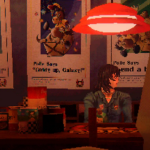

The Dark Queen of Mortholme
Advertisement
The Dark Queen of Mortholm begins and ends in the same place — a silent throne room deep inside a ruined castle. The player takes the role of the queen, ruler of Mortholm, who has faced countless challengers through the centuries. Her world no longer changes; time moves only through the return of a single hero who refuses to give up. The game’s story unfolds as a sequence of repeated confrontations that slowly alter the tone and meaning of her existence. There is no travel, no exploration — only the repetition of a single moment that becomes heavier with every return.
Advertisement
Similiar games
The Dark Queen of Mortholm begins and ends in the same place — a silent throne room deep inside a ruined castle. The player takes the role of the queen, ruler of Mortholm, who has faced countless challengers through the centuries. Her world no longer changes; time moves only through the return of a single hero who refuses to give up. The game’s story unfolds as a sequence of repeated confrontations that slowly alter the tone and meaning of her existence. There is no travel, no exploration — only the repetition of a single moment that becomes heavier with every return.
Gameplay Logic and Progression
The structure of The Dark Queen of Mortholm focuses on cycles rather than traditional levels or missions. Each cycle begins when the hero enters the hall, challenges the queen, and either wins or fails. After each battle, the world resets, but the dialogue and behavior of both characters evolve. The player cannot grow stronger or unlock new abilities; the queen’s role is defined by stability. The hero, however, adapts and learns, forcing the player to question the value of unchanging strength. The entire game functions as a closed system — a ritual that repeats until its meaning collapses or transforms.
Systems of Choice and Interaction
The game combines short combat sequences with dialogue-driven storytelling. Every loop introduces small opportunities to respond differently to the hero’s persistence.
The main features of this interaction model include:
· Dialogue options that gradually reshape tone and perspective.
· Small narrative variations tied to the number of previous encounters.
· Endings determined by whether the player continues to resist or accepts change.
The system keeps the same setting but alters emotional context. Over time, words replace combat as the real instrument of conflict, shifting the experience from control to reflection.
Visual Form and Presentation
The Dark Queen of Mortholm presents its story through pixel-based minimalism. The throne room serves as the game’s only environment — its scale and geometry remain constant, while color, light, and animation convey progress. Each repetition introduces subtle differences: the hero’s stance, the queen’s expression, or a faint shift in background tone. Music follows the same principle — recurring motifs reappear with altered pacing, marking invisible time. The presentation supports the idea that repetition can reveal meaning even when nothing outwardly changes.
Discuss The Dark Queen of Mortholme




















